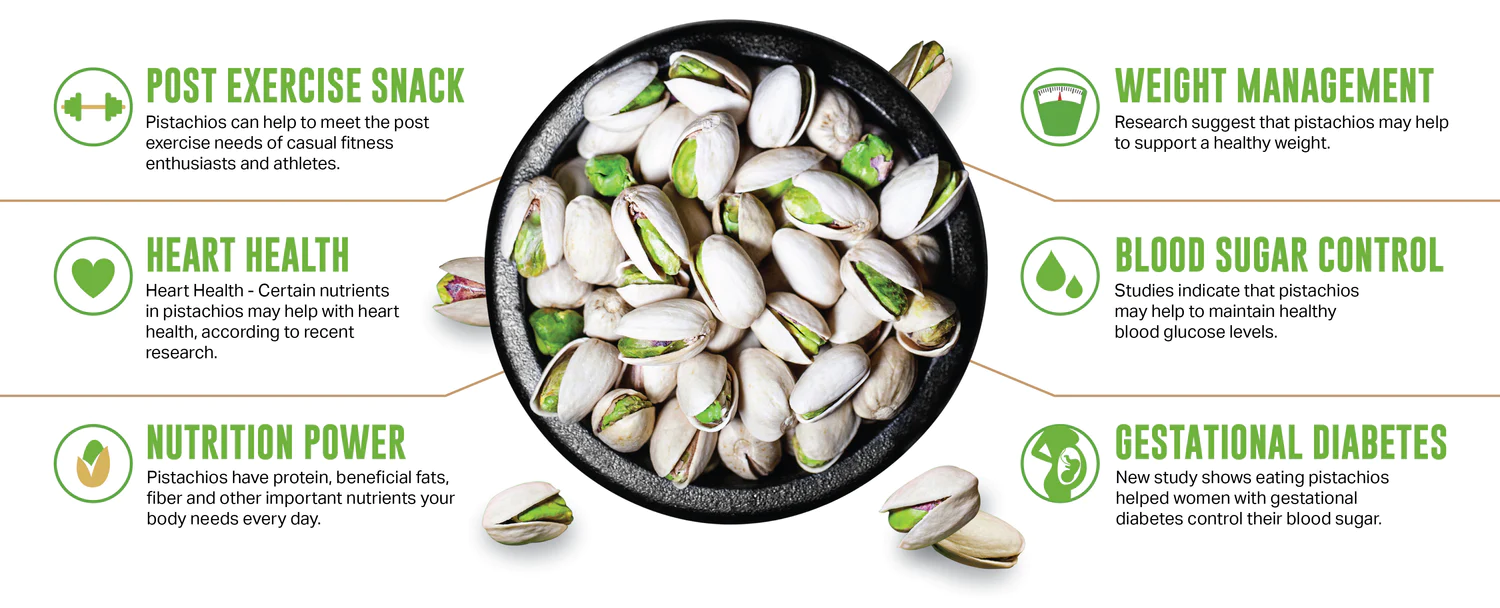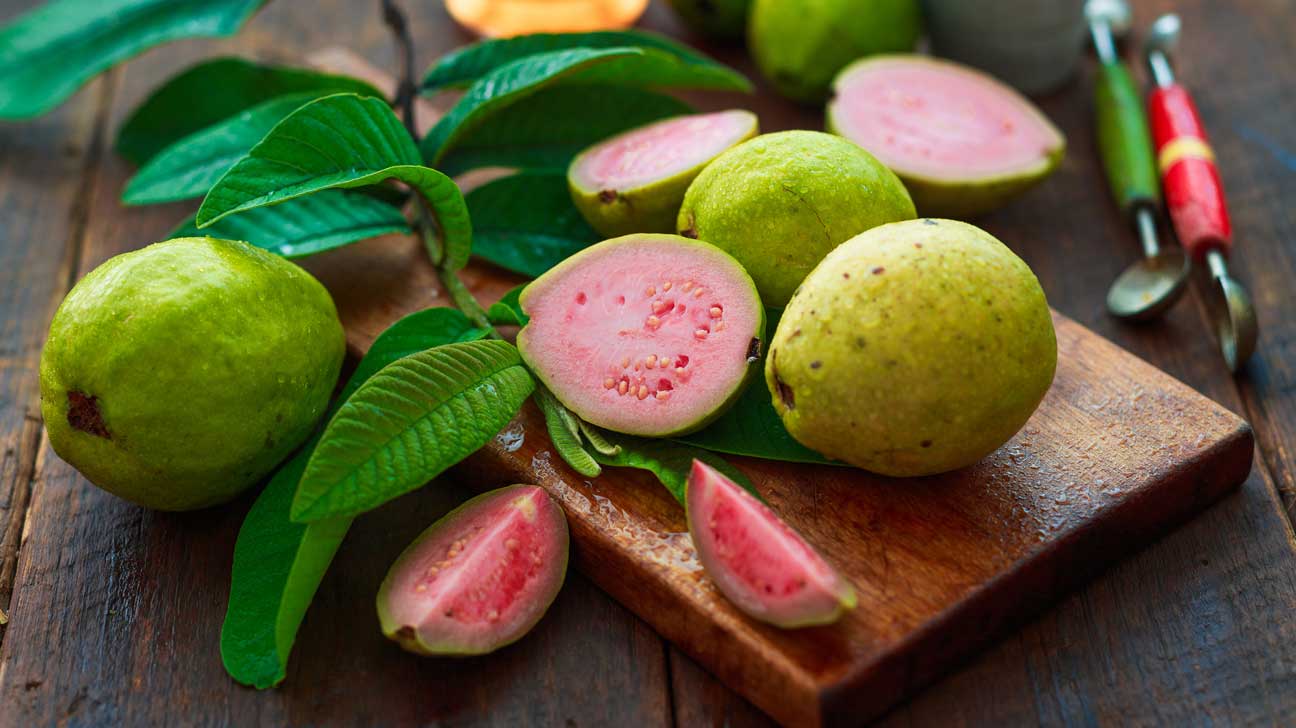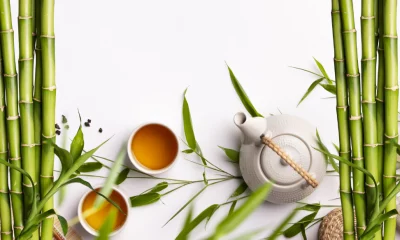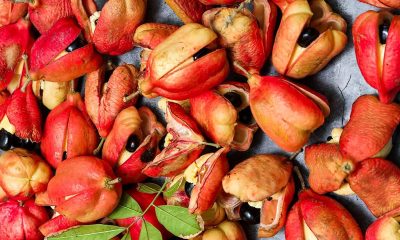Health
Shocking health benefits of pistachios

Discover the shocking health benefits of pistachios.
These little nuts are more than just a tasty delicacy.
When it comes to nuts, pistachios are often overlooked, even though they are little nutritional goldmines.
These little bites are high in fiber, heart-healthy fats, and a good source of filling protein
Pistachios are packed with nutrients
Pistachios are antioxidant-loaded nutritional powerhouses that help minimize free radicals and fight oxidative stress in the body.
They also contain an incredible amount of vitamin B6, whose properties support healthy brain development and immune and nervous system functions. But that is not all.
A pistachio is a very good nut. It has all the essential nutrients except vitamin C.
Pistachios are rich in omega-three fatty acids and have three different types of antioxidants.
They also contain protein, healthy fats, good carbohydrates, fiber and vitamin A.
The amount of nutrients that a single pistachio contains is really impressive. “
Protein is key
It helps to know that a serving of pistachios is 1 ounce or 28 grams or about 49 nuts. It may seem like a lot, but they are quite small without their shells.
Pistachios offer 6 grams of plant protein per serving and help fuel your body with essential amino acids.
As one of the highest protein nuts, pistachios are an excellent addition to a well-balanced eating pattern.
This means that they can be especially helpful for vegetarians or people trying to cut down on the protein they get from animal sources.
The fiber gives pistachios super powers
Pistachios are high in fiber, which research has found to promote stable blood glucose levels and digestive regularity.
One serving contains 3 grams of fiber. Walnuts act as a prebiotic and provide nutrients for the good bacteria located in the gut microbiome , which is essential for the gut and overall health.
Health benefits of pistachios
Plus, high-fiber foods help you feel full, so you’re less likely to seek out less nutritious foods.
1. Pistachios are a blessing to your heart.
Studies show that including pistachios in your daily nutrition plan can be beneficial for cardiovascular health and lower risk factors for associated diseases.
Almost 90% of the fats found in pistachios are the monounsaturated and polyunsaturated types that are best for you, which have been shown to have positive effects on LDL (“bad”) cholesterol and actually lower your levels.
On top of that, research shows that pistachios can help with blood flow and blood pressure.
2. Pistachios can also reduce inflammation
It all comes down to the high polyphenol content of walnuts. Inflammation is the cause of almost all diseases.
Most of the time, inflammation, especially in heart disease, is measured by the amount of something called interleukin six in the blood, and there is a direct relationship between taking polyphenols to reduce heart risk. “
3. Raw pistachios are minimally processed
Good news if you are trying to cut down on the processed foods you eat: Pistachios are probably one of the least processed foods out there.
Nature opens them up on the tree and then they have this really cool machine that just sits at the base of the tree with some kind of big net / shield and then shakes the tree and all the beans fall into the container.
It is sent to a drying facility and then roasted. That’s it. No human hand touches it during processing.
How to collect packaged pistachios:
You’ll find a variety of pistachios on store shelves, and they are all quite tasty.
They can be enjoyed raw, roasted, shelled, or flavored. He loves those seasoned with chili lime, tamari or cumin and black pepper.
Check the sodium to make sure it is on the low end, making it less than 5% of the daily value for sodium.
If you have time, buying raw pistachios and roasting / flavoring them at home can also help control sodium intake.
You’ll also want to steer clear of honey-roasted options if you’re monitoring your sugar intake.
How to add pistachios to your diet:
Although they are perfectly tasty on their own, these nuts are surprisingly versatile. Try some of these strategies to incorporate pistachios into your eating plan.
• Use it as a garnish for rice dishes, salads or desserts.
• Mix with granola or smoothies.
• Crush and add to your favorite energy ball recipe.
• Mix with nut butter.
• We incorporate them a lot in our breading for meats.
Even something like chicken can become much more nutrient dense if you add crushed pistachios to it.
We hope the article on the shocking health benefits of pistachios has been of help to you.
Health
Managing Chronic Pain: Integrative Techniques for Wellness

Key Takeaways
- Understanding chronic pain and its various treatment options is essential for effective management.
- Lifestyle factors, including diet, exercise, and sleep, can significantly influence chronic pain.
- Integrative techniques, including medical treatments and complementary therapies, are vital in tackling pain holistically.
Understanding Chronic Pain
Chronic pain is a persistent type of pain that can last for months or years and may be caused by various factors. In contrast to acute pain, it can continue even after the original injury has healed. Healthcare professionals evaluate a patient’s self-reported pain level and the impact it has on their daily activities to address the complexity of chronic pain. When the underlying cause is unknown, multidisciplinary approaches are necessary to relieve pain.
The Role of Lifestyle in Chronic Pain Management
In the quest for relief, many find solace in discovering a reputable pain clinic near me that employs a range of treatment options. Diet and chronic pain have a significant, if not entirely understood, relationship. Pro-inflammatory foods, excessive caffeine, alcohol, and refined sugars tend to exacerbate inflammation, potentially intensifying pain. On the other hand, anti-inflammatory foods such as fatty fish, greens, nuts, and seeds may help reduce inflammation and, as a result, pain. Consistent hydration and balanced meals can support the body’s natural coping mechanisms. Creating a personalized diet plan with a nutritionist or dietician can be a proactive step in managing chronic pain through lifestyle. Being physically active is critical to managing chronic pain.
Medical Treatments for Chronic Pain Relief
Medications often serve as the first line of defense in chronic pain management. NSAIDs, for example, are commonly used to alleviate inflammation and pain. Antidepressants and anticonvulsants can also be prescribed for their pain-relieving properties. Caution must be taken, especially with more robust, potentially habit-forming medications such as opioids; these should only be used when necessary and with a strict plan for monitoring and tapering. Furthermore, patients are encouraged to ask their healthcare providers about potential side effects and interactions with other medications.
Beyond pharmacological measures, interventional treatments like nerve blocks, epidural steroid injections, and radiofrequency ablation offer non-surgical pain relief for various conditions. In some cases, these targeted procedures may provide lengthy periods of relief and help patients engage in physical therapy and rehabilitation more effectively.
With chronic pain being such a dynamic and individualized issue, research into new therapeutic methods is ongoing. Treatments such as platelet-rich plasma therapy (PRP) and stem cell injections are emerging as potential alternatives. They focus on repairing damaged tissues and reducing pain naturally. However, consulting with experienced pain management specialists before considering these advanced options is essential.
Psychological Approaches to Pain Management
Chronic pain has deep psychological and emotional roots in addition to physical causes. Therapies like Cognitive Behavioral Therapy (CBT) address the thought patterns that can worsen pain perception and decrease the quality of life. Patients can learn to change these thoughts, engage in positive behaviors, and develop strategies to manage setbacks in their pain journey. Biofeedback is a technique that measures and provides real-time data on bodily functions, such as heart rate, muscle tension, and skin temperature. It helps patients gain voluntary control over these functions, and mastering such autonomic processes can improve pain management and give a greater sense of personal power.
Emotional well-being is integral to pain management, as negative emotions can intensify pain perception. Healthcare providers may recommend therapy sessions to address the psychological impacts of chronic pain, helping individuals cope with associated feelings of frustration, depression, or isolation. These therapeutic approaches highlight the importance of treating chronic pain as a comprehensive, biopsychosocial condition.
Navigating the Healthcare System
The complexity of healthcare systems can add a layer of stress for those managing chronic pain. Advocacy is critical. Patients must feel empowered to ask questions and make informed decisions regarding their care. Understanding how health insurance works, what treatments are covered, and how to access necessary medications is imperative. Healthcare professionals can also be invaluable allies in helping patients navigate these systems and ensure that they receive appropriate and timely care.
Looking Ahead: The Future of Pain Management
As we learn more about pain, there is hope for better pain management through new treatments and technologies. For example, virtual reality therapies can help distract patients from pain and reduce its intensity by immersing them in relaxing environments. Scientists are also exploring innovations in pharmaceuticals, non-invasive brain stimulation techniques, and cognitive behavioral therapy apps to treat chronic pain more effectively. Additionally, personalized medicine, which considers an individual’s genetic makeup, lifestyle, and environmental factors, is set to revolutionize pain management.
Health
Benefits of guava leaves Sensually

Table of Contents
Health
9 Health Benefits of Consumption Loquat

Table of Contents
- Loquat types
- Description and ecology
- Cultivation and uses
- How to eat loquat fruit
- 9 Health Benefits Of Consuming Medlar
- Precautions
- Loquat or commonly called medlar, scientifically known as Mespilus germánica, is a large shrub or small tree and named after the fruit of this tree.
The fruit has been cultivated since Roman times and is unusual in being available in winter, and in being eaten when marked.
It is eaten raw and in a variety of dishes. When the genus Mespilus is included in the genus Crataegus, the correct name for this species is Crataegus Germanica Kuntze.
If you’ve ever been walking through south-central China and stumbled across a small evergreen shrub or tree with bright orange fruit, then perhaps you are familiar with the medlar.
Scientifically known as Eriobotrya japonica, the medlar is popularly grown for its fruit, due to its delicious sour taste, sweet flesh, and delicious juices.
Pear-shaped and slightly larger than a plum, the taste of loquat fruit has been likened to a cross between mango and peach.
This particular type of fruit may be native to China, but it became naturalized in Japan over a millennium ago and has spread to other countries in Asia, the Middle East, North America, South America, and the Mediterranean region.
The medlar fruit is used to make jams and jellies and is also eaten in its plain or dried form.
The leaves of the plant have also been found to be beneficial when dried and brewed into tea, which is a popular traditional remedy in Japan.
Poultices and ointments can also be made from the crushed leaves, and when applied topically to wounds and pains.
Loquat fruits and leaves include pectin, iron, potassium, vitamin A, vitamin C, and fiber, making them very effective in increasing overall human health.
Origins and related species
Despite its Latin name, or the scientific Germanic Mespilus meaning German or Germanic medlar, it is indigenous to Southwest Asia and also Southeastern Europe, especially the Black Sea coasts of Bulgaria and modern Turkey.
It may have been cultivated for as long as 3,000 years. The ancient Greek geographer Strabo refers to epsilon in Geographica, Book 16, Chapter 4.
The flower has long sepals that remain on the fruit. Flower bud showing petals and sepals Flower bud. The sepals are behind the petals.
Loquat types
Until recently, the Germanic Mespilus was the only known species of the medlar. However, in 1990, a new species was discovered in North America, now called Mespilus canescens.
The medlar (Eriobotrya japonica), is more distantly related than genera such as Crataegus, Amelanchier, Peraphyllum, and Malacomeles, but was thought to be closely related, and is still known as the “Japanese medlar.”
From an extensive study of the literature and plant specimens, Kazimierz Borowicz concluded that the true homeland of the medlar (Mespilus germanica) is only in the south-eastern part of the Balkan Peninsula, in Asia Minor, in the Caucasus, Crimea, northern Iran, and possibly Turkmenistan as well.
Description and ecology
The Medlar requires warm summers and mild winters and preferably sunny, dry places and slightly acidic soils.
Under ideal circumstances, the deciduous plant grows up to 8 meters (26 feet) tall. In general, it is shorter and more shrub-like than a tree.
With a lifespan of 30-50 years, the medlar is quite short-lived. Its bark is grayish-brown in color with deep vertical cracks that form rectangular plates that tend to peel off.
The leaves are dark green and elliptical, 8-15 centimeters (3.1-5.9 inches) long and 3-5 centimeters (1.2-2.0 inches) wide. The leaves are thickly hairy (pubescent) underneath, turning red in autumn before falling off.
It is found in southern Europe, where it is generally rare. It is reported to have become naturalized in some forests in southeast England but is found in few gardens.
The flowers have five widely oval white petals. The flowers appear in late spring, they are hermaphroditic, pollinated by bees, and self-fertile. The flower is 6 centimeters (2.4 inches) wide.
The reddish-brown fruit is a pomace, 2-3 centimeters (0.79-1.18 inches) in diameter, with persistent, widely spreading sepals around a central pit, giving the fruit a ‘hollow’ appearance.
Cultivation and uses
The medlar was introduced to Greece around 700 BC and Rome around 200 BC. It was an important fruit plant during Roman and medieval times.
In the seventeenth and eighteenth centuries, however, it had been replaced by other fruits and is rarely cultivated today.
Loquat seeds are one of the few fruits that become edible in winter, making them an important tree for gardeners who want to have fruits available year-round.
Medlar plants can be grafted onto the rootstock of another species, for example, pear, quince, or hawthorn, to improve their performance in different soils.
Loquat fruits are tough and acidic, but become edible after being softened, ‘scored’, frozen, or stored naturally long enough.
Once softening begins, the skin quickly takes on a wrinkled texture and turns dark brown, and the inside is reduced to the consistency and flavor reminiscent of apple sauce.
This process can confuse newcomers with loquats, as a softened fruit looks as if it has gone bad. Once marked, the fruit can be eaten raw and is often eaten for dessert, or used to make loquat jelly.
They are used in “Níspero cheese,” which is similar to lemon curd, which is made from fruit pulp, eggs, and butter. Medlar cultivars grown for its fruit include ‘Hollandia’, ‘Nottingham’ and ‘Russian’, the large-fruited variety ‘Dutch’ (also known as’ Giant ‘or’ Monsters’), ‘Royal’, ‘Giant of Breda ‘and’ great Russian ‘.
How to eat loquat fruit
What you don’t get is a lot to eat from each medlar (they contain several pretty chunky stones, the “nuggets” just don’t paint the right picture) and my favorite way to eat them is to scoop the meat straight from the fruit with a spoon.
It is a delicacy with wine, port, or cheese. You can also mix the pulp with sugar and cream, but I think this reduces its flavor. Adding it to yogurt for breakfast is a delight.
Medlars are probably best known, however, for being turned into gelatin or cheese, when the fruits are cooked whole and passed through a sieve.
You’ll need a fair number to make more than just a small glass, but the fun will be getting your friends to guess what it’s about.
9 Health Benefits Of Consuming Medlar
Let’s take a closer look at the many health benefits of loquat.
1.- Reduce blood pressure
One of the many nutrients found in good condition within the medlar is potassium, which acts as a vasodilator for the cardiovascular system.
By reducing stress and pressure on blood vessels and arteries, potassium can lower blood pressure and protect heart health.
Potassium is often considered a brain booster, due to increased blood flow to the capillaries in the brain, which can improve cognition.
2.- Prevents Diabetes
Loquat tea is often suggested as a means of preventing or treating diabetes, as it has been shown to lower blood sugar significantly in those who ingest it regularly.
The unique organic compounds found in loquat tea are capable of regulating insulin and glucose levels, helping to protect the body against diabetes.
Also, for those suffering from diabetes, avoiding spikes and drops in blood sugar is crucial, and this tea can help.
3.- Reduces the risk of cancer
In the medlar, several antioxidants are beneficial for human health. Antioxidants are capable of neutralizing free radicals in the body that are generated as a natural by-product of cellular metabolism.
These molecules with their unpaired electrons can cause healthy cells to mutate, leading to chronic diseases, including cancer. Loquat tea has been specifically linked to lower rates of lung and oral cancer.
4.- Respiratory system
Expectorant substances are important in treating colds and other respiratory infections. Loquat tea is used as an expectorant, either when drunk or gargled, as it can cause coughing and expulsion of mucus and phlegm.
This is where bacteria can live and grow while exacerbating other symptoms, so removing it from your airways can help you feel better fast.
5.- Increases immunity
Medlar is a wonderful source of vitamin C, which is a key component of everyone’s immune system. Vitamin C helps stimulate the production of white blood cells, the body’s first line of defense against pathogens, and it also works as an antioxidant to prevent chronic diseases.
In addition, vitamin C is necessary for the production of collagen, which helps the growth and repair of tissues throughout the body after illness or injury.
6.- Helps indigestion
Pectin is a particular type of dietary fiber found in loquat fruit, and it is often praised as a digestive aid.
Dietary fiber can accumulate stool and stimulate peristaltic movement, which helps with the regularity of bowel movements.
If you suffer from constipation, diarrhea, cramps, bloating, or other stomach disorders, dietary fiber can ease that inflammation and improve the health of your gut.
7.- Control cholesterol levels
Although the precise mechanism is not fully understood, research has directly linked loquat to lower cholesterol levels in those subjects who regularly consume fruit and tea.
This health benefit of medlar is very exciting, but also relatively unproven on a large scale, and studies to find out more are ongoing.
8.- Strengthens the bones
Loss of bone mineral density is a major problem for many people as they age, especially for women after menopause.
Fortunately, medlar has been shown to prevent loss of bone density in various parts of the body, due to its rich mix of vitamins, nutrients, and hormone-mimicking chemicals.
9.- Regulates the circulatory system
High levels of iron in a person’s diet are important if they want to avoid anemia and its brutal symptoms. Iron is found in high concentrations within the medlar, which is good news for your red blood cells.
-

 Food2 months ago
Food2 months ago8 shocking benefits of leek juice and side effects
-

 Food1 month ago
Food1 month ago10 + Benefits of carrot juice and side effects
-

 Health1 month ago
Health1 month agoBenefits of guava leaves Sensually
-

 Health2 months ago
Health2 months ago10 shocking health benefits of Canary seed milk
-
Weight Loss1 month ago
Chrissy Metz Weight Loss Secret (2022)
-

 Health1 month ago
Health1 month ago7 health benefits of cashew leaves and side effects
-

 Weight Loss1 month ago
Weight Loss1 month agoKelly Osbourne weight loss 2022
-

 Food2 months ago
Food2 months agoHealth benefits of gongolili or vetiver and side effects












